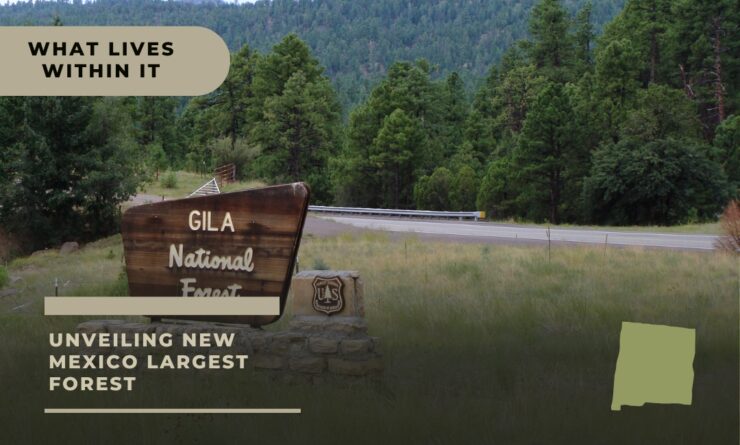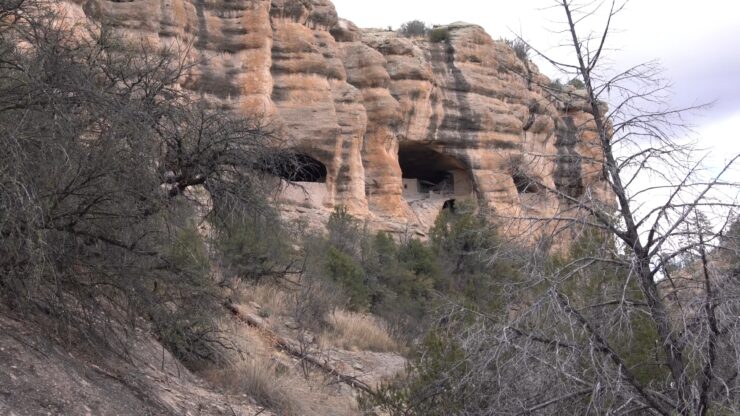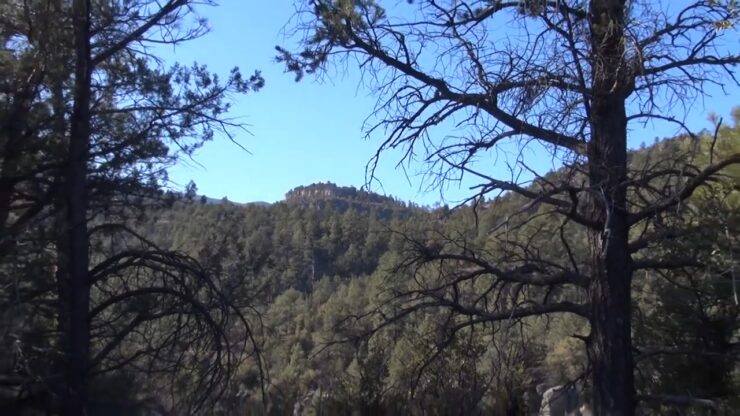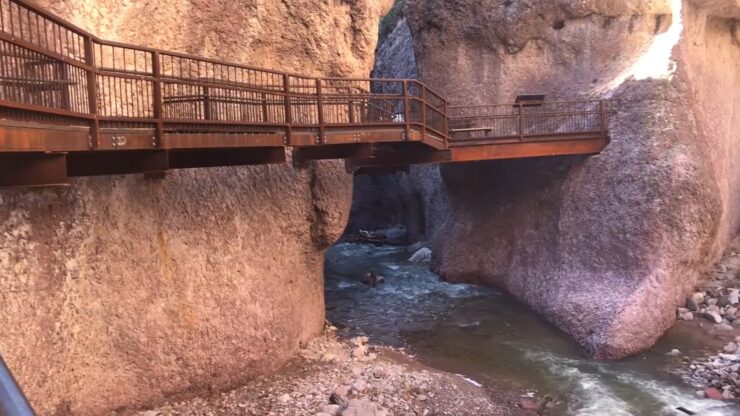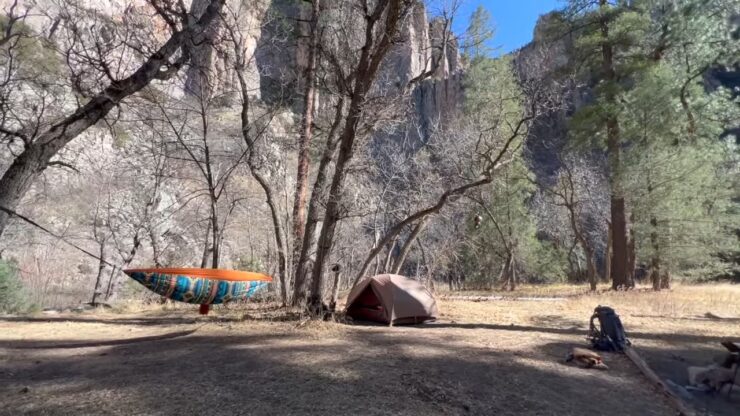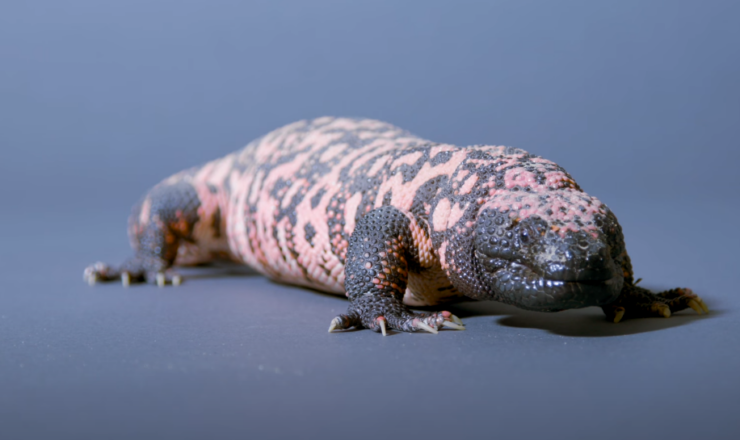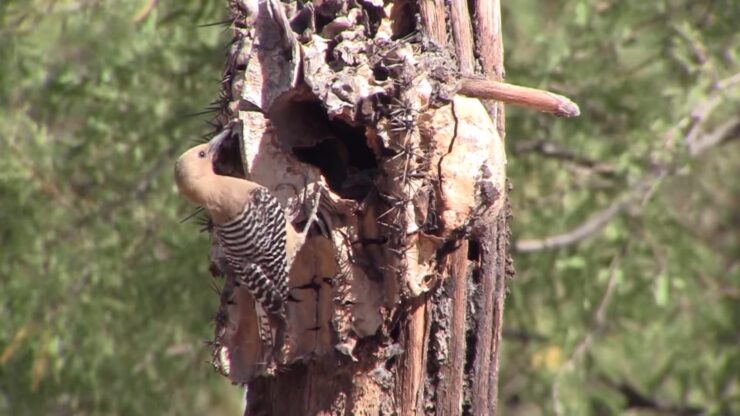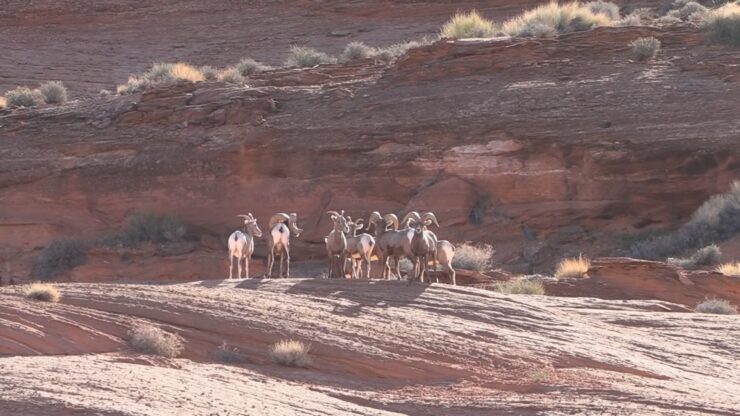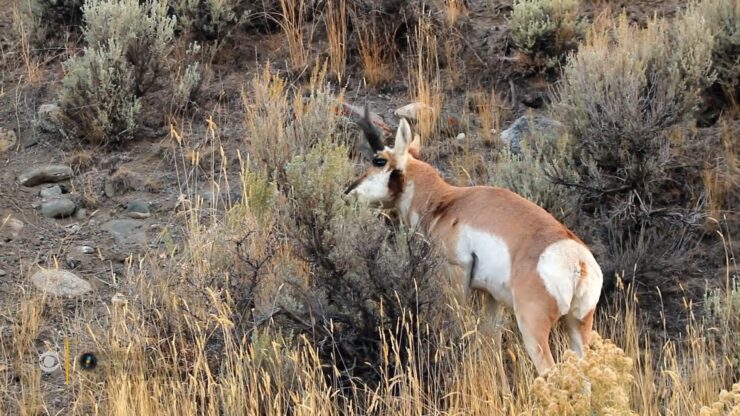The crown for the most expansive forest in New Mexico goes to the Gila National Forest. Positioned near the city of Silver City, the forest spans over a colossal 2,710,659 acres. It was formally designated a national forest on March 4, 1907, having previously been known as the Gila River Forest Reserve and the Gila Forest Reserve.
Exploring the Gila National Forest
The Gila National Forest is an explorer’s paradise. Covering more than 2.7 million acres, the forest sprawls across four New Mexico counties: Catron, Grant, Hidalgo, and Sierra. This vast territory includes dense woodlands, deep canyons, and semi-desert areas, each offering unique exploration opportunities. From awe-inspiring cliff dwellings to untouched hot springs, the Gila National Forest presents a rich tapestry of natural and historical wonders.
Journey to the Past: Gila Cliff Dwellings National Monument
A highlight of the Gila National Forest is the Gila Cliff Dwellings National Monument, situated in southern Catron County. This protected site is a testament to the Mogollon people who lived there over 700 years ago.
The cliff dwellings, built within five caves in the cliff face, offer a rare glimpse into the lives of this ancient culture. Visitors can embark on guided tours, immersing themselves in history while marveling at the dwellings’ architectural intricacies and the captivating tales they tell.
A Call to the Wild: Aldo Leopold Wilderness and the Blue Range Wilderness
For those with a fondness for wilderness, the Gila National Forest boasts the Aldo Leopold Wilderness and the Blue Range Wilderness. The Aldo Leopold Wilderness, named after the pioneering conservationist, embodies Leopold’s vision of a landscape unmarred by human intervention. The Blue Range Wilderness, likewise, offers an untouched and rugged landscape perfect for intrepid explorers seeking solitude and tranquility.
Soothing Serenity: Turkey Creek and Middle Fork Hot Springs
Adding to the forest’s allure are the untouched hot springs like the Turkey Creek Hot Springs and Middle Fork Hot Springs. These natural geothermal wonders are nestled amid the forest’s vast expanse, providing a soothing respite from a day of exploration. Immersing oneself in these naturally heated pools while surrounded by nature is a unique experience that shouldn’t be missed.
Dare the Heights: The Catwalk Recreation Area
Moreover, the Gila National Forest is home to the Catwalk Recreation Area. This unique location offers a series of trails traversing the scenic Whitewater Canyon. The main trail includes a catwalk, a hanging walkway anchored to the canyon walls, providing visitors with thrilling views of the surrounding landscape.
Celestial Wonder: Cosmic Campground International Dark Sky Sanctuary
For stargazers and astronomy enthusiasts, a visit to the Cosmic Campground International Dark Sky Sanctuary (CCIDSS) is a must. This sanctuary, the first of its kind in the Northern Hemisphere, offers unobstructed views of the night sky. With minimal light pollution, the CCIDSS allows for unparalleled stargazing. On clear nights, the Milky Way’s vast expanse is visible to the naked eye, a spectacle that will leave you in awe of the universe’s grandeur.
Engaging in Outdoor Activities in the Gila National Forest
Alongside these destinations, the forest provides a plethora of outdoor activities. Bird-watching, given the forest’s rich avian biodiversity, is a popular pursuit. Camping in the forest’s designated areas allows visitors to immerse themselves in nature and wake up to the forest’s calming sounds. Hiking trails range from easy, family-friendly paths to more challenging routes, catering to various fitness levels and adventure desires.
Immerse in the Natural Beauty of Gila National Forest
The Gila National Forest is a place of immense beauty and diversity. Whether it’s history, nature, or adventure that you seek, you’re sure to find it here. This extraordinary natural setting invites you to step out of your daily routine and step into a world where nature reigns supreme.
Wildlife of the Gila National Forest
With such an extensive forest, it’s home to a diverse array of wildlife. Here are some of the creatures you might encounter during your visit.
Gila Monster
The Gila monster, a venomous lizard, is one of the most intriguing inhabitants of the Gila National Forest. Native to the southwestern United States and the northwestern Mexican state of Sonora, it is one of the few venomous lizards in the world. These lizards prefer arid climates, making the Gila Forest an ideal habitat. With the forest’s rocky terrain and underground spaces, the Gila monsters have perfect places to hide and hunt.
The Gila monster’s lifestyle aligns with the harsh desert conditions. They are slow-moving creatures that spend the majority of their lives in underground burrows, emerging primarily to hunt. Their diet is varied, including small mammals like rabbits, squirrels, and mice, as well as birds and their eggs. They’ve also been known to consume other lizards and insects, utilizing their potent venom to immobilize their prey.
Interestingly, despite being venomous, Gila monsters pose a minimal threat to humans. They tend to be sluggish and shy, avoiding contact with humans whenever possible. When they do interact, it’s usually in self-defense, and even then, incidents are rare. Gila monsters thus contribute to the forest’s ecosystem without posing significant risks to its visitors.
Gila Woodpecker
The Gila woodpecker, a medium-sized bird, is another resident of the Gila National Forest. Their distinctive black and white pattern on their wings and their unique churring call are a common sight and sound in desert conditions. The woodpeckers have adapted to the desert climate, nesting in the cavities of hardwood trees to escape the heat and to protect their eggs and fledglings from predators.
They play a crucial role in maintaining the health of the forest. Their diet largely consists of insects, many of which are considered pests. Thus, their foraging activity keeps the pest population in check. They also consume fruits and berries, contributing to seed dispersal, which aids in plant diversity and growth.
Interestingly, the cavities that Gila woodpeckers create in trees are often used by other bird species for nesting once they have been vacated, making these woodpeckers essential in creating homes for other birds. They symbolize the interconnectedness of species within the Gila National Forest ecosystem.
Desert Bighorn Sheep
Desert Bighorn Sheep, recognized for their stout bodies and extraordinary climbing abilities, are another remarkable species that call the Gila National Forest home. The desert environment and the mountainous terrain provide an ideal habitat for these sheep. Their nimble navigation of the steep, rocky cliffs helps them evade predators, with mountain lions being their most common threat.
The sheep play an important role in the forest ecosystem. As herbivores, they feed on a variety of desert plants, aiding in the distribution of plant seeds through their droppings. The locations they choose for grazing often lead to changes in plant community structure, influencing which species thrive in certain areas.
Desert Bighorn Sheep are an emblem of desert wilderness and represent the health and diversity of desert ecosystems. Their presence in the Gila National Forest contributes to the forest’s overall biodiversity and serves as an indicator of the area’s ecological wellbeing.
Gray Fox
Once the most common fox species in North America, Gray foxes are key inhabitants of the Gila National Forest. They’re known for their adaptability, making the varied landscape of the forest their home, from its dense woods to semi-desert areas. Gray foxes are also unique as they are one of the few canine species capable of climbing trees, an ability that comes in handy when evading predators or hunting for food.
As omnivores, gray foxes contribute to the balance of the forest ecosystem. Their diet includes small mammals, birds, and insects, which helps control those populations. They also eat a significant amount of plant material, especially fruits and berries, aiding in seed dispersal.
Despite their population decline, these adaptable creatures play a crucial role in maintaining the ecological balance. The presence of gray foxes in the Gila National Forest serves as a testament to the forest’s health and biodiversity.
American Antelope/Pronghorn
The American antelope, also known as the pronghorn, is a distinct resident of the Gila National Forest. Although not a true antelope, this even-toed ungulate shares similar characteristics and fills the same ecological niche. The vast expanses of the forest and nearby plains provide excellent habitats for these fast runners. They have unique white fur markings that serve as a warning signal to other pronghorns when danger is present.
Pronghorns are herbivores and have a significant impact on vegetation in the areas they inhabit. They feed on a wide range of plants, and their grazing helps maintain the balance and diversity of plant life within the forest. Their dietary preferences can also contribute to the control of invasive plant species.
The pronghorn, with its rich folklore and its role in maintaining the health of plant life, is an essential part of the Gila National Forest’s ecosystem. They are considered an emblem of the American West and have great cultural significance to many Native American tribes.
Spotted Owl
Finally, the Spotted Owl is a vital part of the Gila National Forest ecosystem. The Mexican spotted owl, a subspecies, has its highest population concentration within the Gila Wilderness. These owls prefer older forests with high, complex canopies for nesting and roosting. Their presence is often an indication of a healthy, mature forest.
Spotted Owls are nocturnal hunters and demonstrate extraordinary patience as they wait for their prey, which consists primarily of small mammals. They contribute to the balance of animal populations in the forest. As they are at the top of the food chain, their well-being is a strong indicator of the overall health of the ecosystem.
Despite being threatened due to habitat destruction, the fact that they have made the Gila National Forest their home is a testament to the quality of the forest’s conservation efforts. Efforts to protect the spotted owl also indirectly protect many other species that inhabit the forest, reinforcing the significance of this majestic bird in the ecosystem..
- If you want to read more articles on New Mexico check here.
FAQ
What is the best time of year to visit the Gila National Forest?
The best time to visit the Gila National Forest depends on your planned activities and weather preferences. Generally, late spring and early fall are considered ideal for hiking and camping due to milder temperatures and lower chances of rain.
However, if you are a bird watcher, you might prefer the spring migration period (April-May). For winter sports like snowshoeing or cross-country skiing, obviously the winter months would be best. Always check the local weather conditions and fire danger level before planning your visit.
Are there any visitor services available in the Gila National Forest?
Yes, there are several visitor centers and ranger stations throughout the Gila National Forest that provide maps, permits, educational displays, restrooms, and other amenities. The Gila Visitor Center near the Gila Cliff Dwellings is one such facility.
There are also many campgrounds and picnic areas available for public use. Some of these facilities may require fees or permits, so it’s best to check with the local Forest Service office or the forest’s official website for the most current information.
Are pets allowed in the Gila National Forest?
Yes, pets are generally allowed in the Gila National Forest. However, they must be kept on a leash not more than six feet long, and you are responsible for cleaning up after them. Pets may not be allowed in some specific areas such as certain campgrounds, picnic areas, or near wildlife. Also, pets are not allowed in the Gila Cliff Dwellings to protect the cultural resource. Always check local regulations before bringing your pet.
Is backcountry camping allowed in the Gila National Forest?
Yes, backcountry or dispersed camping is allowed in many areas of the Gila National Forest. However, you must follow the Leave No Trace principles to protect the forest’s natural resources.
There may also be some restrictions or regulations depending on the specific area, such as a requirement to camp at least a certain distance from water sources and trails, and to properly store food to avoid attracting wildlife. Always check with the local Forest Service office or the forest’s official website for current information.
What safety precautions should I take while exploring the Gila National Forest?
Safety in the Gila National Forest, like any wilderness area, requires preparation and common sense. Always let someone know where you’re going and when you plan to return. Check weather forecasts and fire conditions before you go, and be aware that cell phone service may be spotty or non-existent in some areas.
Carry plenty of water, especially in the arid, lower-elevation areas, and be aware of the signs of heat exhaustion and altitude sickness. Keep a safe distance from wildlife, and store food properly to avoid attracting them to your campsite. Lastly, if you’re hiking in remote areas or off established trails, a map, compass, and knowledge of how to use them are essential.
Are there educational or interpretive programs available in the Gila National Forest?
Yes, the Gila National Forest and the Gila Cliff Dwellings National Monument offer a variety of educational and interpretive programs throughout the year, including guided tours, talks, and Junior Ranger programs for children.
These programs are a great way to learn more about the forest’s history, geology, wildlife, and ecology. The availability of these programs may vary by season and current COVID-19 restrictions, so it’s best to check with the local Forest Service office or the forest’s official website for the most current information.
What should I do if I encounter a wild animal in the Gila National Forest?
If you encounter a wild animal in the Gila National Forest, keep a safe distance and do not attempt to feed or touch it. Most wildlife will avoid humans if given the chance. If you come across a larger animal such as a bear or mountain lion, make yourself appear larger, make noise, and back away slowly.
Do not turn your back or run, as this could trigger a chase response. If you’re camping, store your food and trash securely to avoid attracting wildlife to your campsite. Remember, you are a visitor in their home. Respect wildlife and observe them from a distance.
Conclusion
In conclusion, the Gila National Forest is a true natural treasure. Its expansive landscapes offer an immersive encounter with nature that few places can rival. With its rich historical sites, untouched wilderness, vibrant wildlife, and opportunities for adventure and relaxation alike, it stands as a testament to the enduring splendor of the American Southwest.
From the ancient footprints at the Gila Cliff Dwellings National Monument to the celestial footprints visible at the Cosmic Campground International Dark Sky Sanctuary, there are footprints of different kinds left for us to explore and marvel at. This majestic forest serves as a sanctuary for diverse species and offers a serene retreat for those seeking a respite from the bustle of modern life.

